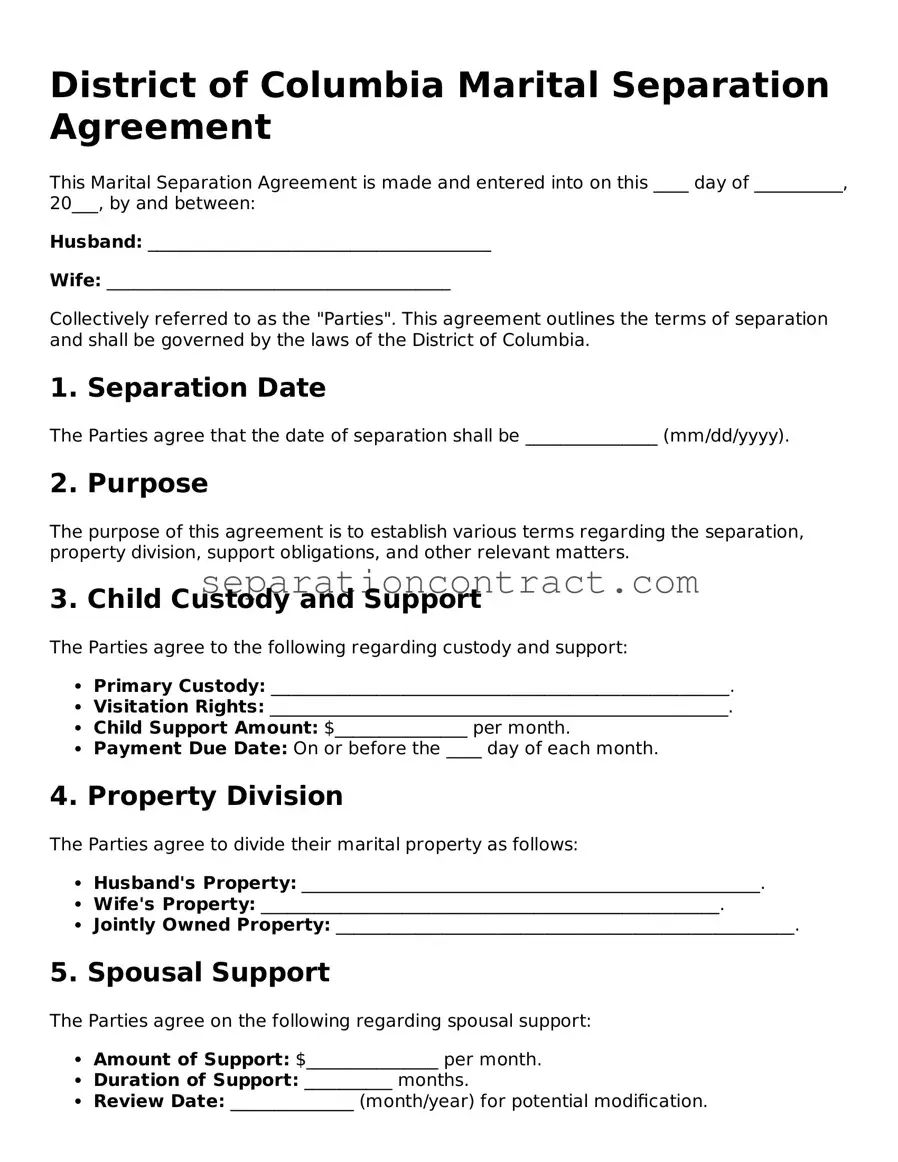Filling out the District of Columbia Marital Separation Agreement form can be a daunting task. Many individuals make common mistakes that can lead to complications later on. One frequent error is failing to provide complete information. When individuals leave out essential details, such as full names or addresses, it can create confusion and delay the processing of the agreement.
Another mistake involves misunderstanding the terms of the agreement. Some individuals may not fully grasp the implications of certain clauses, leading to unintended consequences. It is crucial to read each section carefully and consider how it affects both parties. Seeking clarification on any confusing terms can prevent misunderstandings down the line.
People often neglect to include all assets and liabilities in the agreement. Omitting significant items can result in disputes later. It is important to take inventory of all marital property and debts to ensure a fair division. This oversight can undermine the agreement’s effectiveness and lead to further legal complications.
Additionally, individuals sometimes fail to have the agreement properly notarized. A notary public’s signature is often required to validate the document. Without this step, the agreement may not hold up in court, rendering it ineffective. This is a critical step that should not be overlooked.
Another common mistake is rushing through the process. Some individuals may feel pressured to complete the form quickly, leading to careless errors. Taking the time to review the form thoroughly can prevent mistakes that might require additional time and effort to correct.
Misunderstanding the legal implications of the agreement can also be a significant error. Many individuals assume that once the form is signed, it is final. However, certain conditions can lead to modifications. Understanding these nuances can help individuals navigate their rights and responsibilities more effectively.
Finally, a lack of communication between the parties can lead to misunderstandings. It is vital to discuss the terms openly and reach a mutual agreement before finalizing the document. Clear communication can help ensure that both parties are on the same page, reducing the likelihood of disputes in the future.
